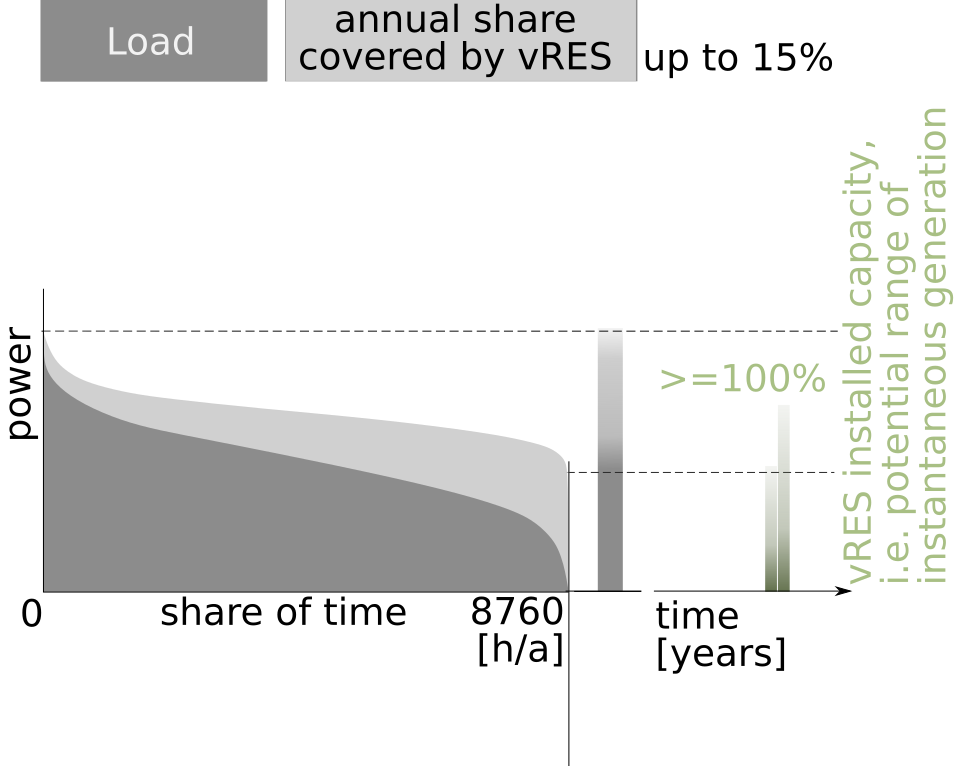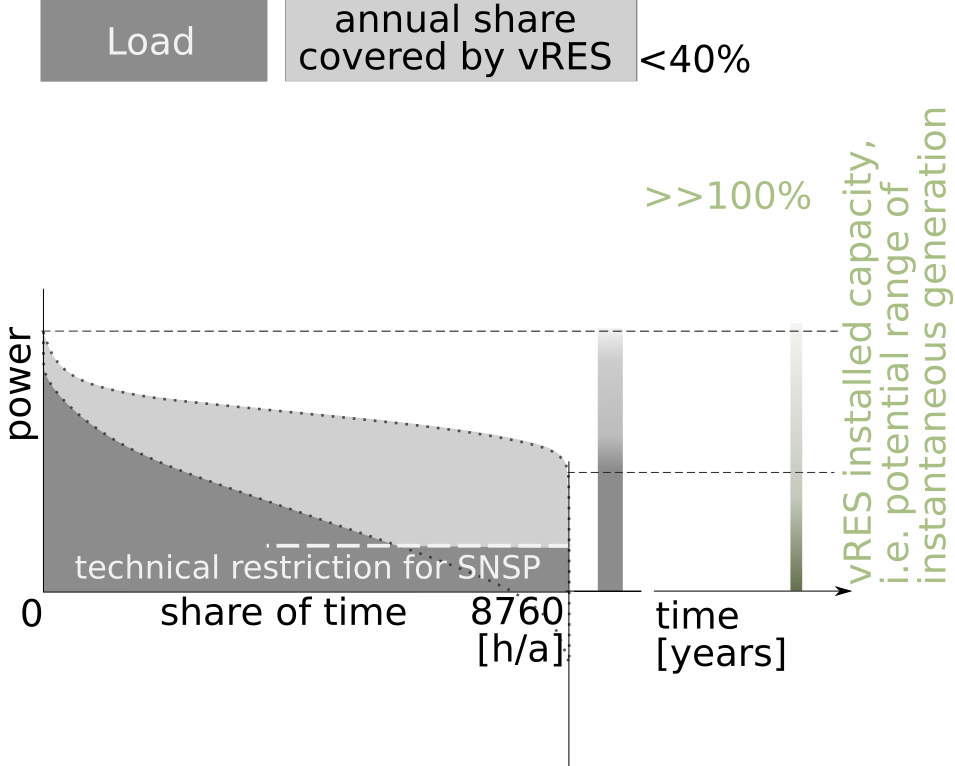
Indicators and Milestones
The installed vRES capacity is about the same as the system minimum load.
Depending on the correlation of vRES generation and load, situations may occur where
vRES generation - theoretically - covers the complete demand.
Reasons are reduced
inertia
and lack of
ancillary services.

Milestones
Before touching SNSP restrictions, vRES share in annual supply may grow up to 15%.
With SNSP restrictions, vRES share in annual supply will not grow further than about 40%.
A blunt Statement: once the SNSP restrictions are overcome by technology achievements,
there are no technical challenges left.
Any further system modification to get closer to complete decarbonisation in phase 4 and X
essentially are optimisations, mainly in the sphere of economy.
Of course, technology improvements still help to improve cost effectiveness.
And once the technical concepts are proven and mature, they can be reproduced in every country.
This means that the SNSP barrier will be an issue in the next decade for the front runners.
Later on other countries will copy the solutions and may accelerate through phase 3 much faster.
Implications
With SNSP restrictions in place, there is a barrier for further vRES growth.
Any capacity addition will, in first instance, increase the amount of curtailed vRES generation.
In operational dispatch, the capability to restrict
System Non Synchronous Penetration (SNSP) assumes fast communication covering large parts of vRES capacity.
More important than implementing adequate technology foundations are the regulatory frameworks.

 Milestones
Milestones